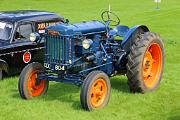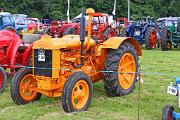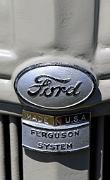
Ford-Ferguson 9N 1939. After falling out with David Brown, Harry Ferguson and Henry Ford shook hands on the production of a Ferguson system tractor to be built by Ford using their engines
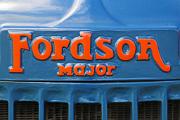
Fordson Major E27N Tractor. Badge on bonnet. The 'Major' was first used on the postwar E27N from 1948 to 1951 when a 'New Major' replaced the E27N. The Fordson Power Major came out in 1958 and the Super Major in 1960
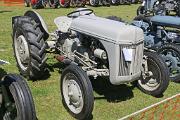
Ford-Ferguson 9N 1939. After falling out with David Brown, Harry Ferguson and Henry Ford shook hands on the production of a Ferguson system tractor to be built by Ford using their engines
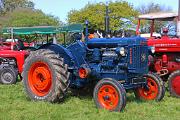
Fordson Major E27N Tractor. Introduced by Ford in Britain in 1948, the Major E27N was just an evolution of prewar tractors. A 4.4-litre Petrol engine or Perkins P6 6-cylinder diesel 4.7-litre engine powered the E27N. Produced from 1948 until 1952
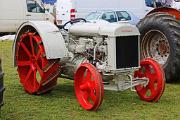
Fordson Model F 1926. Charles Sorenson and Eugene Farkas designed the Model F and it began production at Henry Ford and Son's plant at Dearborn, Michigan from 1917 to 1920 because Henry Ford had left the Ford Motor Company. In 1920 Henry bought back into the now failing Ford Motor Company and production went to their plant. Some 750,000 appear to have been made worldwide.
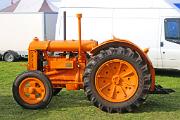
Fordson Model N 1939. The Model N replaced the Model F in 1929 and was produced until 1945. Production started in Cork, Ireland, but after a few years it was transferred to Dagenham. Normal engine was a 4.4-litre petrol or kerosene. The all orange was one of three colour schemes which also included blue/orange and green/red.
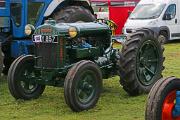
Fordson Model N 1944 Industrial. Some Tractors were bought by Industry to tow trailers around factory yards.
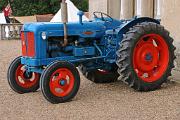
Fordson Power Major 1958. Produced at Dagenham from 1958 to 1961 with a 3.6-litre diesel or a 3.3-litre petrol engine.
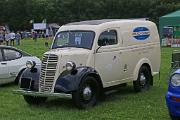
Fordson Vans and Trucks
Fordson E83W 1951 Van. Produced at the Dagenham plant from 1938 to 1957 alongside the Fordson tractors. The E83W was a half-ton commercial based on the mechanics of the Ford Ten. An 1,172cc sidevalve engine sat beside the driver and its modest power was only good for around 40mph. From 1938 to 1951 the E83W was sold under the 'Fordson' brand and from 1952 as the 'Ford Thames'.
